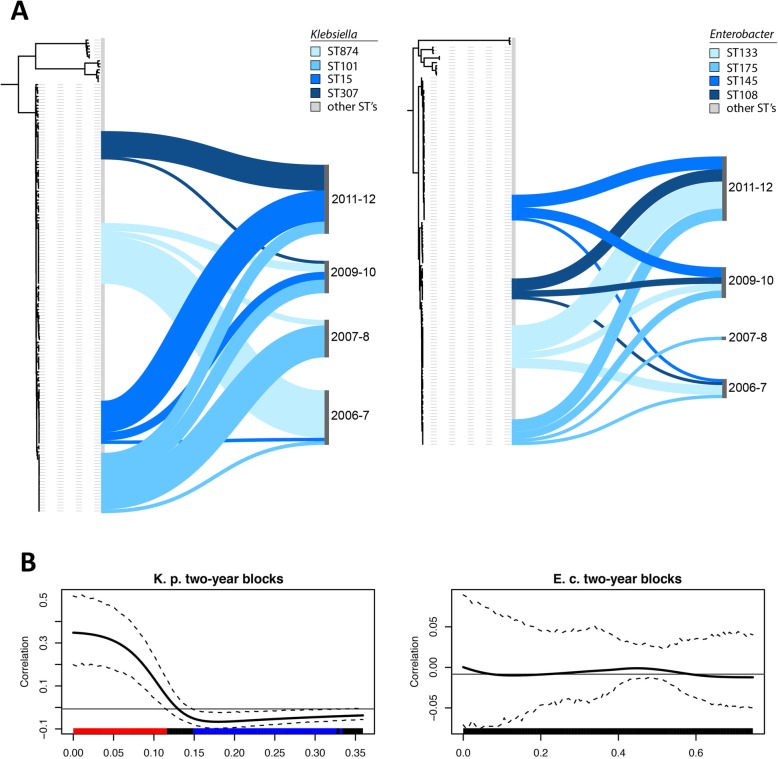Fig. 4.
Population structures of Klebsiella and Enterobacter over time. a Visualizing the occurrence of the four main sequence types for Klebsiella (left tree) and Enterobacter (right tree) highlights a consecutive replacement of the different Klebsiella sequence types, whereas the main Enterobacter sequence types occur continuously as mixed population during all time frames. b Test for the correlation of the distance on the tree between two samples using SNP data from whole-genome trees after removing recombination and sharing or difference of a trait (2-year spans of isolation as given in Additional file 2: Tables S1 and S4). This shows a strong positive correlation (similar trait is more likely) for very close strains and negative correlation (similar traits are more unlikely) for large distances on the tree for Klebsiella (left panel); no signal can be observed for Enterobacter (right panel)

